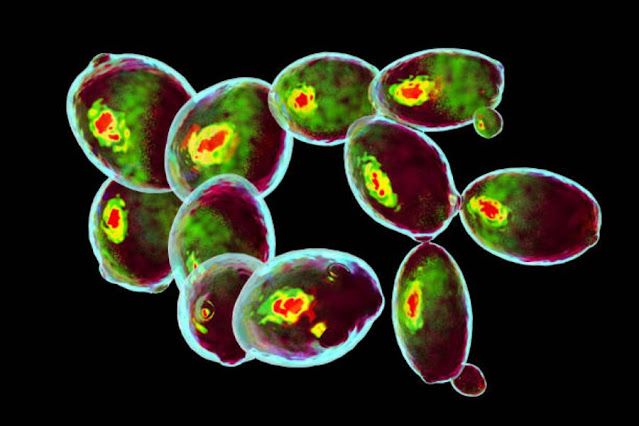Featured
- Get link
- X
- Other Apps
Flow Cytometry

Principles of Flow Cytometry:
Flow cytometry involves the analysis of cells or particles
as they card over a laser beam. The process includes three main components:
Sample Preparation: The sample, usually a suspension of
cells, is prepared by labeling with fluorescent dyes or antibodies conjugated
to fluorochromes. These labels bind specifically to target molecules, allowing
their detection.
Hydrodynamic Focusing: The sample is introduced into a
fluidic system that is hydrodynamically focused into a single-file stream,
ensuring that only one cell passes through the laser beam at a time.
Laser Interactions and Detection: As cells pass through the
laser beam, they scatter light and emit fluorescence, which detectors collect.
Forward scatter (FSC) measures cell size, while side scatter (SSC) provides
information about cell granularity and internal complexity. Fluorescence
emission from labeled cells is detected using specific filters and
photomultiplier tubes (PMTs).
Applications of Flow Cytometry:
Flow cytometry has diverse applications across scientific
disciplines:
Immunophenotyping: Flow cytometry allows identifying and
characterizing different cell populations based on their surface markers. It is
widely used in immunology and hematology to analyze immune cell subsets,
diagnose immunodeficiencies, and monitor leukemia and lymphoma.
Cell Cycle Analysis: Flow cytometry provides valuable
information about the cell cycle distribution of a cell population, enabling
the assessment of cell proliferation, DNA content, and cell cycle kinetics. It
has applications in cancer research, developmental biology, and drug discovery.
Intracellular Staining: Flow cytometry enables the analysis
of intracellular proteins and signaling pathways. By permeabilizing cells, it
allows the detection of intracellular markers, cytokines, and transcription
factors. This technique is crucial in immunology and the study of cellular
processes.
Apoptosis Analysis: Flow cytometry can detect apoptotic
cells based on changes in membrane integrity, DNA fragmentation, and
mitochondrial function. This allows the quantification and characterization of
apoptotic processes in various research fields, including cancer biology and
drug development.
Functional Assays: Flow cytometry enables functional assays,
such as calcium flux, cell proliferation, and cytokine secretion assays. It quantitatively
assesses cellular responses to stimuli and is crucial in immunology, drug discovery, and vaccine development.
Conclusion:
Flow cytometry has transformed cellular analysis, providing
valuable insights into the complex and dynamic world of cells. Its ability to
simultaneously measure multiple parameters in individual cells has
revolutionized immunophenotyping, cell cycle analysis, and functional assays.
Recent advancements in high-dimensional analysis, imaging capabilities,
single-cell analysis, and automation have expanded the capabilities and
applications of flow cytometry. With ongoing developments in instrumentation,
data analysis, and clinical validation, flow cytometry will continue to play a
crucial role in medical diagnostics, drug discovery, and personalized medicine,
leading to improved patient outcomes and advancements in scientific research.
- Get link
- X
- Other Apps

